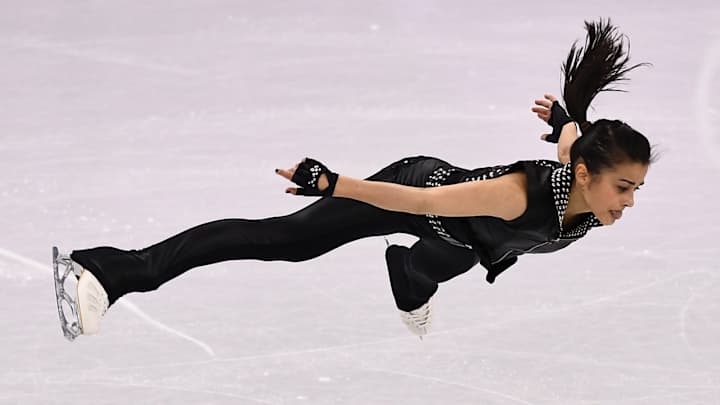How to Understand the Top-Left Scoring Graphic in Figure Skating Broadcasts

PYEONGCHANG, South Korea (AP) — Olympic broadcasters know that many figure skating viewers can’t tell a salchow from a toe loop, making it hard to discern just how well a skater is doing.
If you’re feeling a bit confused, here's some advice—just look up and to the left.
The Olympic Broadcast Service, which provides Olympic feeds to broadcast partners like NBC, has included a helpful live scoring box at the top-left corner of the screen for all figure skating events this year. It’s a handy tool for hardcore and novice skating fans alike—assuming you know how to use it.
Here’s an example of one such graphic, taken from the free dance program of Canadian gold medalists Tessa Virtue and Scott Moir:
Tessa Virtue and Scott Moir were simply stunning to go home with the gold.
— NBC Olympics & Paralympics (@NBCOlympics) February 20, 2018
Olympic Ice starts now, presented by @Toyota. https://t.co/I5ctWfEAdH pic.twitter.com/6IVmq3Gc1U
The first thing to know: there are two sets of marks that make up a figure skating score—the technical element score and the program component score. The OBS graphic is solely focused on the former. The latter is only revealed once skaters advance to the kiss and cry.
Think of the technical score as a measure of difficulty for the program. Each skating movement—like a lutz or a toe loop—comes with a base point value, with more difficult moves earning more points. For instance, a well-executed triple axel will get higher marks than a strong triple loop. Scores can be boosted slightly for things like hand position and difficulty of approach, and points may be docked if a skater under-rotates a jump or messes up a spin.
The OBS graphic allows viewers to compare technical scores across programs in real time. It always lists the event leader at the top—in our sample graphic above, that's the 63.98 points racked up by French dancers Gabriella Papadakis and Guillaume Cizeron. Below that, you can see the score for the active skaters.
As the skaters move through their program, the graphic is updated to reflect the technical score to that point. So in the graphic above, we see that Virtue and Moir had 53.97 technical points through the first seven sections of their performance. They finished with a technical score of 63.35, just shy of the French pair, who won the free dance portion of the competition. Virtue and Moir still took gold thanks to their stronger short dance.
Below those technical scores, the OBS has placed a series of boxes, with each one representing a different element of the program.
Judges are provided with a planned program for each skater, so they know which elment is supposed to happen when. If a skater does the anticipated move and executes it by the book or better, the box for that element will turn green, signifying a successful element.
If the skater performs the element poorly—say they under-rotate or fall on a jump—then the box for that element will turn red, signifying the skater did not earn full points for the maneuver.
And if the move requires further review—usually either because the skater performed a different element than expected, or because judges aren't certain about the execution—the box will turn yellow. Routinely, a box will go yellow at first, then switch to either red or green as the program continues. If this happens, it means the technical judges have made a decision about the element.
Lastly, if an invalid element is performed, the boxes will show a white X. This happened Tuesday when American Evan Bates dropped partner Madison Chock during the free dance competition.
Got it? Great. Feel like learning a little more? Here's a deeper dive on scoring provided to the AP by OBS Senior Graphics Manager Kim Erdahl:
"Each element is assigned a base value from the ISU ‘Scale of Value’ chart, and the judges give a score based on the ‘Grade of Execution’ of that element. The range of scores assigned by the judges is from -3.00 to +3.00, based on how well that specific element is performed. So a poorly executed element will receive a negative score, an element executed as expected will receive 0.00, and a very well executed element will receive a positive score. The score for an element is the base value plus (or minus) the Grade of Execution. As those scores are entered, the technical score for that element is added to a skater’s total technical score on this graphic. A negative ‘GOE’ is indicated with a red box, and a 0.00 or positive GOE is indicated with a green box. If an element performed does not match the planned element, the yellow box is displayed while the new element is evaluated and a base value assigned. Once the new base value is assigned, the judges Grade of Execution scores are applied, and the yellow box will turn red or green."
